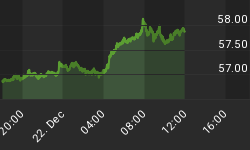Or maybe it's the final four, as Lehman sees it. As expected, the FOMC lifted its target fed funds rate another 25 basis points up to 4-3/4% by unanimous consent. The operative meeting-ahead paragraph was verbatim with what Greenspan had crafted on January 31. Gee whiz, continuity is fine but couldn't you change the wording a little, Chairman Bernanke?
"The Committee judges that some further policy firming may be needed to keep the risks to the attainment of both sustainable economic growth and price stability roughly in balance. In any event, the Committee will respond to changes in economic prospects as needed to foster these objectives."
Because the FOMC raised the funds rate today based on January 31 language, Pavlov's dogs are now panting that the FOMC will repeat on May 10 because of the same language of the meeting-ahead paragraph.
In the preamble, the FOMC sees economic growth moderating "to a more sustainable pace" after the first quarter's hiccup. There's been little impact of higher commodity prices on core inflation, unit labor cost growth is well behaved and inflation expectations remain tethered. Yet, you never know. So, when in doubt, onward and upward to 5% and flirt with the disaster of a recession. If a recession occurs, then the FOMC can be sure there won't be any inflation. Then the FOMC can start cutting.
The more things change, the more they stay the same. The Bernanke Fed, like the Greenspan Fed, like just about every Fed, does not trust leading economic indicators. So, unless everyone's favorite coincident indicator, nonfarm payrolls, weakens visibly, between now and May 10, it looks as though 5% is most likely.
Consumers - Today Is Better Than Yesterday, But What About Tomorrow?
The Conference Board announced today that its March survey of consumers showed their confidence up. The March composite index increased 4.5 points month-to-month to a level of 107.2 - its highest reading since May 2002. Chart 1 shows the behavior of the Present Situation index vs. the Expectations index, both of which are smoothed with a three-month moving average. Since the middle of 2003, consumers have gotten progressively more confident about their current situation and mildly less so about their future economic lot in life. Should they start getting more confident about tomorrow? Chart 2 suggests not. Along with the Present Situation Consumer Confidence index I have plotted the spread between the 10-year Treasury security yield and the fed funds rate - one of my, though not Bernanke's, favorite leading indicators. Notice that the spread narrows well ahead of the onset of recessions while consumers are blissfully confident about their current situation until just before they lose their jobs. History suggests that investors and policymakers would do better to pay attention to the behavior of the yield curve than to listen to consumers' view of their current situation.
Chart 1
Chart 2















